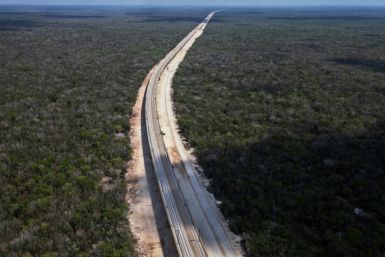US Aerospace Command Shifting Its Communication Gear To Cold War Era Bunker in Cheyenne Mountains In View Of Threats

Faced with a plethora of missile threats, the North American Aerospace Defense is shifting its vital communication gear to the Cheyenne Mountain base in Colorado to safeguard its sensitive sensors and servers from potential electromagnetic pulse attacks. The move to relocate to a Cold War-era mountain bunker has been confirmed by the senior officers.
NORAD, in charge of North America's skies, scans the space for enemy missiles and hostile aircraft. For it, the safety of Cheyenne mountain bunker suits better as it is custom built in a half-acre cavern carved into the mountain. It was created in the 1960s to withstand any Soviet nuclear attack. The massive complex is so designed that airmen can send warnings that could trigger the launch of nuclear missiles.
Admiral William Gortney, head of NORAD and Northern Command said "because of the very nature of the way that Cheyenne Mountain's built, it's EMP-hardened. And so, there's a lot of movement to put capability into Cheyenne Mountain and to be able to communicate in there.”
Vulnerability
The precautionary step comes from the vulnerability the command centre faces from electromagnetic pulses, because of the military's high dependence on computer networks and digital communications. A high-altitude nuclear explosion can pulverize the networks wreak heavy damage.
In early April, Pentagon signed a $700 million contract with Raytheon Corporation to spruce up the work for NORAD and US Northern Command. The contract was meant to make sure, "sustainment" of services to help the military perform "accurate, timely and unambiguous warning and attack assessment of air, missile and space threats" at the Cheyenne and Petersen bases. Raytheon's contract also involves unspecified work at Vandenberg Air Force Base in California and Offutt Air Force Base in Nebraska.
It may be recalled that in 2006, the headquarters of NORAD and the U.S. Northern Command was moved out from Cheyenne to Petersen Air Force base in Colorado Springs. It was decided that the Cheyenne bunker will be used as an alternative back up command centre. That time the move was described as a means for efficient use of resources despite Cheyenne being modernized by spending hundreds of millions of dollars after the attacks of September 11, 2001. Now the Pentagon is shifting the communications gear back to the Cheyenne bunker for better safety. The officials said a lot of back office communications have already been moved there.
Unconventional Threats
Regarding threats, Adm. William Gortney, is already on record that North Korea's case of it having attained a threatening ability to miniaturise a nuclear warhead attachable to an operational road mobile intercontinental ballistic missile and can hit the United States. “Our assessment is that Pyongyang has the ability to put a nuclear weapon on a KN-08 and shoot it at the U.S. homeland,” Gortney had said in a press briefing. In the past, U.S. officials had underplayed Pyongyang’s nuclear weapons program and its capability to launch a long-range KN-08 missile. But, Gortney has openly validated that threat for the first time. This supplements many other threats faced by the U.S. from erstwhile Cold war rivals such as Russia, China and some rogue states.
(For feedback/comments, contact the writer at kalyanaussie@gmail.com)






